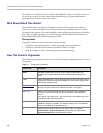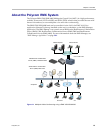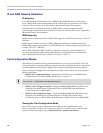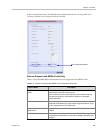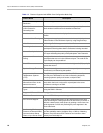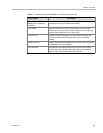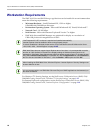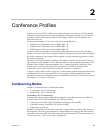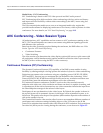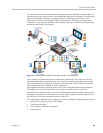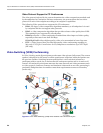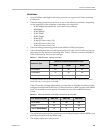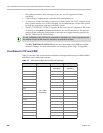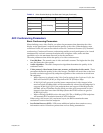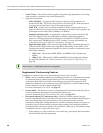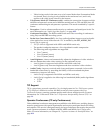
Polycom RealPresence Collaboration Server (RMX) 1500/2000/4000 Administrator’s Guide
2-2 Polycom, Inc.
Media Relay - SVC Conferencing
SVC Conferencing is based on the SVC video protocol and SAC audio protocol.
SVC Conferencing offers high resolution video conferencing with low end-to-end latency
and improved Error Resiliency without video transcoding by the MCU, hence using less
video resources.
The Polycom multipoint media server, acts as an integrated media relay engine that
provides media streams for displaying conferences at low latency video experience in video
conferences. For more details, see "SVC-based Conferencing” on page 2-12.
AVC Conferencing - Video Session Types
All endpoints have AVC capabilities and can connect to AVC conferences running on the
MCU. AVC-based Endpoints can connect can connect using different signaling protocols
and different video protocols.
Based on the video processing required during the conference, the RMX offers two Video
Session Types for AVC-based conferencing:
• Continuous Presence
• Video Switching
The video session type determines the video display options (full screen or split screen with
all participants viewed simultaneously) and the method in which the video is processed by
the MCU (with or without using the MCU’s video resources).
Continuous Presence (CP) Conferencing
The dynamic Continuous Presence (CP) capability of the RMX system enables viewing
flexibility by offering multiple viewing options and window layouts for video conferencing.
Endpoints can connect to the conference using any signaling protocol (H.323, SIP, ISDN/
PSTN and RTV), line rate (up to a maximum line rate defined for the conference), Video
Protocol (H.261, H.263, H.264 Base and High Profile) and at any resolution and frame rate
(provided they meet the minimum requirements set for the conference).
In Continuous Presence conferences, the MCU receives the video stream from each
endpoint at the video rate, video resolution and frame rate that it is capable of sending, and
it superimposes all the received streams into one video stream that includes the input from
the other endpoints arranges in the selected video layout.
Participants do not see themselves in the video layout. By Default, the speaker is shown in
the top left layout cell in symmetric layouts, in the larger cell in asymmetric layouts, or in
full screen. The speaker sees the previous speakers (their number depends on the number of
cells on the speaker’s layout.
The Continuous Presence video session offers layouts to accommodate different numbers of
participants and conference settings including support of the VUI annex to the H.264
protocol for endpoints that transmit wide video instead of 4CIF resolution. Each participant
can select his/her layout for viewing during the conference, as can be seen in Figure 2-1.



